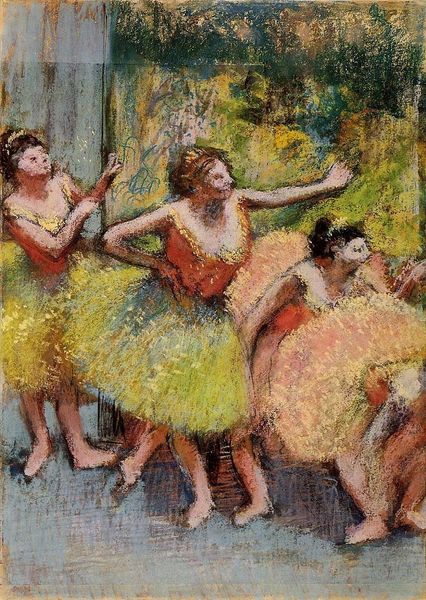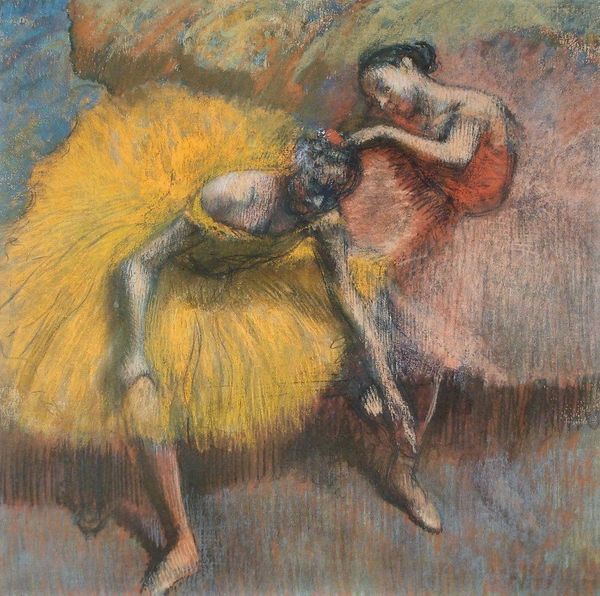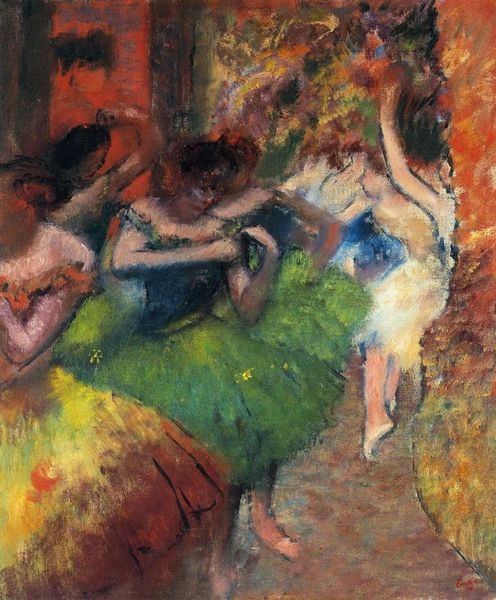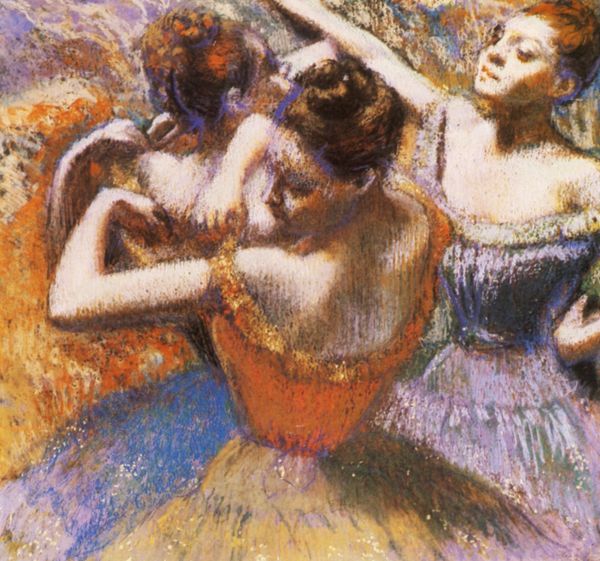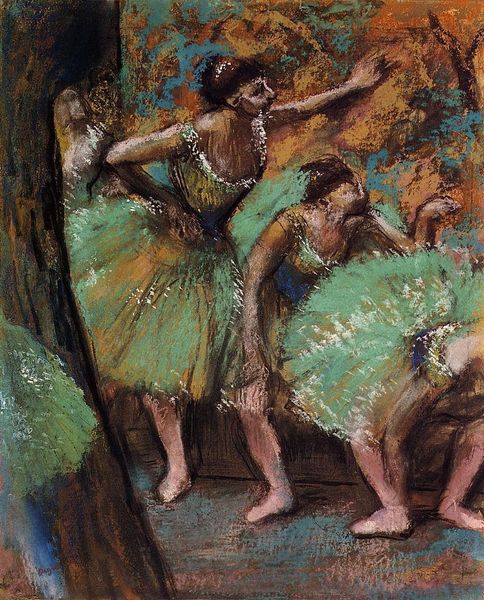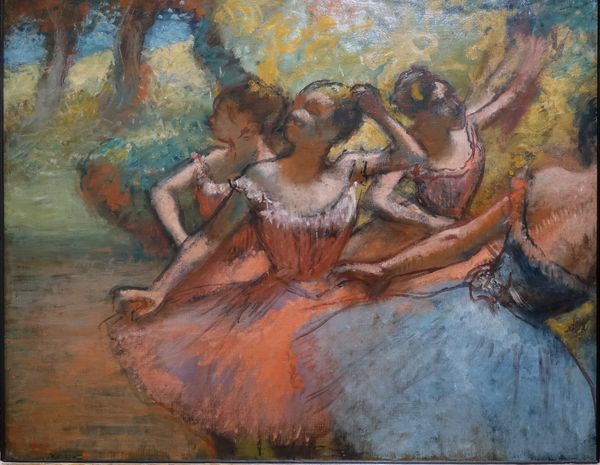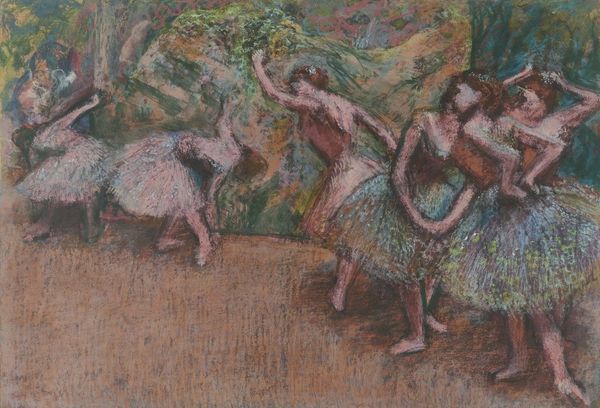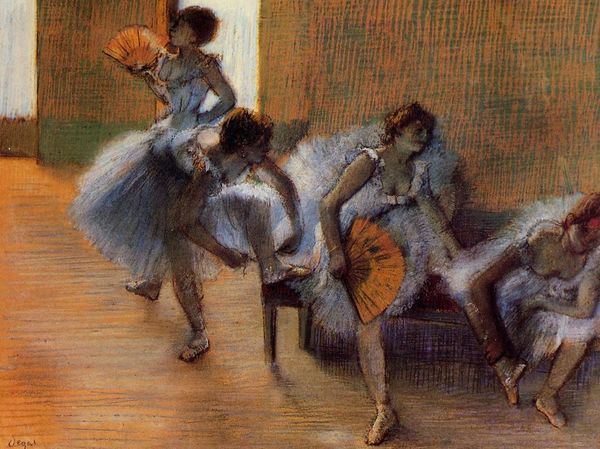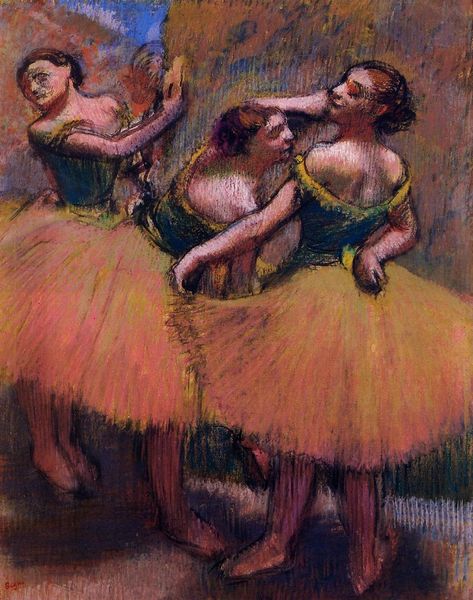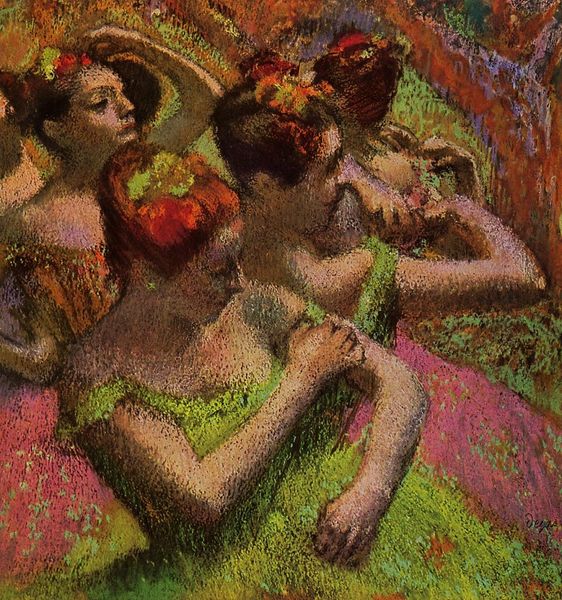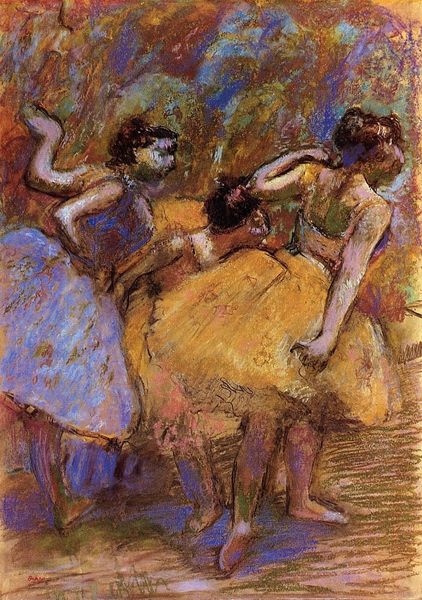
painting, oil-paint
#
painting
#
impressionism
#
impressionist painting style
#
oil-paint
#
figuration
#
possibly oil pastel
#
france
#
painting painterly
#
genre-painting
#
history-painting
Copyright: Public domain
Editor: Here we have Edgar Degas' "Ballet Scene," created around 1885 using oil paints. It evokes such a dreamy, almost ephemeral feeling, capturing the dancers seemingly in a moment of quiet repose. How do you interpret this work? Curator: What I find particularly compelling about this work is how it situates these ballerinas within a complex socio-political landscape. The Paris Opera Ballet was not just a place of art; it was deeply entwined with ideas of class, gender, and power. Considering that many dancers came from impoverished backgrounds, do you think this work provides any social commentary on the expectations put upon women? Editor: That's a great point; I hadn't considered the socioeconomic aspect so overtly. It does seem that their beauty and talent were almost commodities, didn't they? Curator: Precisely. Degas' perspective wasn't always celebratory. Sometimes, it unveiled the pressures and scrutiny these women faced, which is particularly reflected in their seemingly exhausted or vulnerable moments, such as the almost dismissive positioning and obscured face of the leftmost dancer, which has interesting connotations. Editor: That's so interesting; the hazy, soft focus almost romanticizes their profession while you're right, closer consideration makes their experience seems really hard! Curator: Yes, Degas' impressionistic style allowed him to capture fleeting moments and movements. His artistic choices allowed for both criticism and romanticism to coexist. What did you make of Degas’ decision to show a moment ‘behind the scenes’, a stolen glance at the hard labour these dancers undertook? Editor: Now I'm left questioning how seemingly beautiful imagery can also speak to really complicated cultural dynamics that are, unfortunately, still relevant today. Thank you! Curator: Indeed. Recognizing the intersections of art, power, and identity opens new paths to engage more fully with the richness and challenge of the work.
Comments
No comments
Be the first to comment and join the conversation on the ultimate creative platform.
